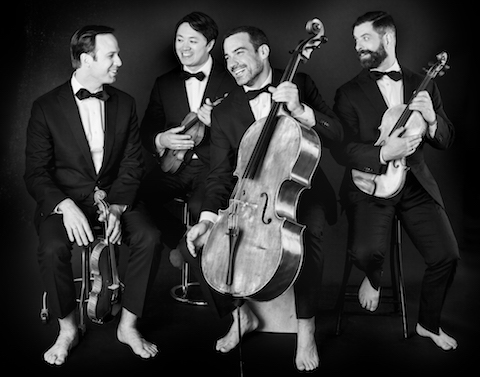

Press

By Daniel Gelernter for The Weekly Standard
Two musical forms dominated Beethoven's mind and rounded every chapter of his life: the piano sonata was his vanguard. The string quartet was the ultimate expression. Beethoven's five late quartets, the last works he wrote, represent more than his total subjugation of the most difficult frontier he had ever crossed. They are the monument to the man, and a summation of his entire achievement.
The late quartets are challenging for musicians and audiences both. So it is typical for an ensemble to intersperse some lighter fare. To give a performance without fluff, featuring only late Beethoven, is an inherently difficult and worthy project. It involves a serious amount of focus and energy, roughly on the order of what it would take to squeeze a medium-sized star into a ping pong ball.
The Miró Quartet appeared on Friday, May 5 at Carnegie Hall to perform two of these late quartets, Opera 130 and 131, including the original last movement for Opus 130, called the "Große Fuge." They performed in the chamber music room at Carnegie, the lovely little Weill Recital Hall: white-walled with light blue drapery, gilt moldings and crystal chandeliers. It has just 268 seats, which creates the perfect degree of intimacy for a small ensemble, but also places a greater emphasis on the duties of the audience. These duties consist entirely of remaining reasonably quiet and not dropping anything, and yet a striking number of ostensibly adult concertgoers found these demands on their limited faculties excessive.
The string quartet Opus 131, in C-sharp minor, was first on the program and is one of only two pieces Beethoven composed in that key. (The other is the "Moonlight" Sonata, which was written twenty-five years earlier.) Op 131 was Beethoven's own favorite of his late quartets, a complex seven-movement piece properly performed—as it was on this occasion—with each movement flowing seamlessly into the next, without pause. Schubert so loved this quartet that it was the last piece he requested to hear, and it was played specially for him just five days before he died.
The Miró Quartet's performance was exceptional, notwithstanding some occasional weak intonation of the sort that affects most string quartets. Their tempi were lively and their interpretation was superb. The now-disbanded Alban Berg Quartet's recordings of late Beethoven have for many years been definitive, but the Miró Quartet's performance of the fifth movement presto was finer still.
It is one of the great gifts of a live quartet performance that the interplay between instruments—in particular between the first and second violins, which may be hard to distinguish in a recording—is plainly visible. The demands Beethoven places on the quartet in Op 131 transform the piece nearly into a ballet. The audience was carried into the music to an obvious degree, and would have applauded in between movements had the Miró Quartet relaxed even for a moment. To their great credit, they did not, and the extraordinary dramatic tension pulled taut to the last bars, and the galloping final C-sharp major chords.
The Op 130 B-flat major quartet was markedly less focused, perhaps because the performers were husbanding their resources for the "Große Fuge," a piece which stands alone in Beethoven's repertoire and in music as a whole—it is like nothing in history composed before or since. Not only is it "fiendishly difficult to play," but audiences found it fiendishly difficult to hear—at the 1826 debut, the reviewer for the Allgemeine musikalische Zeitung called it "incomprehensible, like Chinese." The reception was so severe that Beethoven's publisher, Matthias Artaria, asked him to write a different last movement for Op 130 and to publish the fugue separately. Beethoven agreed, to the continuing surprise of music historians (who are easily surprised), and the "Große Fuge" is today listed under its own Opus number: 133. A recent renewed interest in the composer's original intent has restored the fugue to its rightful place in many performances. This is a net gain. On the other hand, it means we are deprived of the published final movement which Beethoven composed to replace the fugue—a movement much less ambitious, but exceptional and beautiful nonetheless, and the last thing Beethoven ever wrote. It would have made a fitting encore, and it is a pity that we were completely deprived of it.
Instead, the Miró Quartet performed for their encore the slow movement of Op 135, the last quartet. The majestic calm of this movement, following the vital fire of the "Große Fuge," was perfect balance—a slow closing of the curtains following the greatest musical life of all. This was a preeminently daring and ambitious program, and one of the finest performances of the season. We hope that ensembles and soloists alike will follow the example set by the Miró Quartet, if they can.